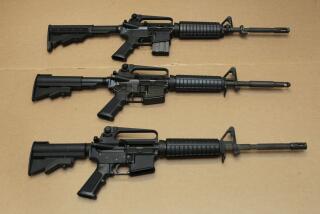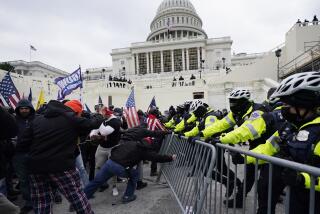Warren ‘Frisk and Seizure’ Ruling Stands Test of Time
- Share via
WASHINGTON — Twenty-five years ago this week, the Supreme Court in an opinion by then Chief Justice Earl Warren ruled that police may stop and frisk a crime suspect on the streets to check for weapons.
However, the officer may not go beyond this “protective search” to also look for evidence of a crime unless he obtains a search warrant from a magistrate.
According to Warren, this dual approach protected the safety of the police while protecting citizens against body searches by overzealous officers.
This decision, in Terry vs. Ohio, has governed police searches of pedestrians ever since.
On Monday, Justice Byron R. White, the last surviving member of the Warren court, announced the decision in this term’s most important search-and-seizure case, and the result showed that law in this area has changed remarkably little in 25 years.
Ruling in a Minnesota case, White said that an officer who encounters a crime suspect may pat him down for weapons and may seize a lump of cocaine that he notices in this process. So long as it is “immediately apparent” that he has found a rock of cocaine, this evidence can be seized.
However, once it is clear that no weapon is present, the officer may not “rummage” through the suspect’s clothing looking for evidence. Officers may not feel around in pockets or elsewhere seeking to find drugs.
“These principles were settled 25 years ago,” White said, in announcing that the court had thrown out the drug evidence seized from Timothy Dickerson on a Minneapolis street.
On the evening of Nov. 9, 1989, two officers spotted Dickerson leaving a reputed “crack house” on the city’s north side. They stopped him on the street and gave him a pat-down search. Though they found no weapons, one officer felt something odd in his pocket and by “squeezing, sliding and otherwise manipulating it,” he concluded that he was feeling a rock of cocaine in a bag.
Speaking for a 6-3 majority, White said that the police in this case “overstepped the bounds of the strictly circumscribed search for weapons allowed under Terry.”
The high court rejected the arguments of Minnesota prosecutors and Justice Department attorneys, who sought far broader powers for the police to search for and seize evidence. They had urged the court to rule that any evidence found during a lawful search should be admitted into evidence.
Around the country, the courts have been divided on whether drug evidence is admissible when it is found through frisking a suspect for weapons. According to the court briefs, California judges have been inclined to permit the use of evidence which is discovered through a pat-down search.
In this case (Minnesota vs. Dickerson, 91-2019) the justices also rejected a more liberal approach favored by the Minnesota Supreme Court. In its view, no drug evidence could ever be seized during a weapons search.
Instead, White and the high court settled on a middle approach. The officer who feels for a gun and finds what is “immediately apparent” to be a rock of cocaine can seize that evidence, he said. The court has long said that police who inadvertently stumble on crime evidence during a lawful search can seize it.
But a pat-down search for weapons becomes unlawful the instant it is clear that no weapon is present.
More to Read
Sign up for Essential California
The most important California stories and recommendations in your inbox every morning.
You may occasionally receive promotional content from the Los Angeles Times.











